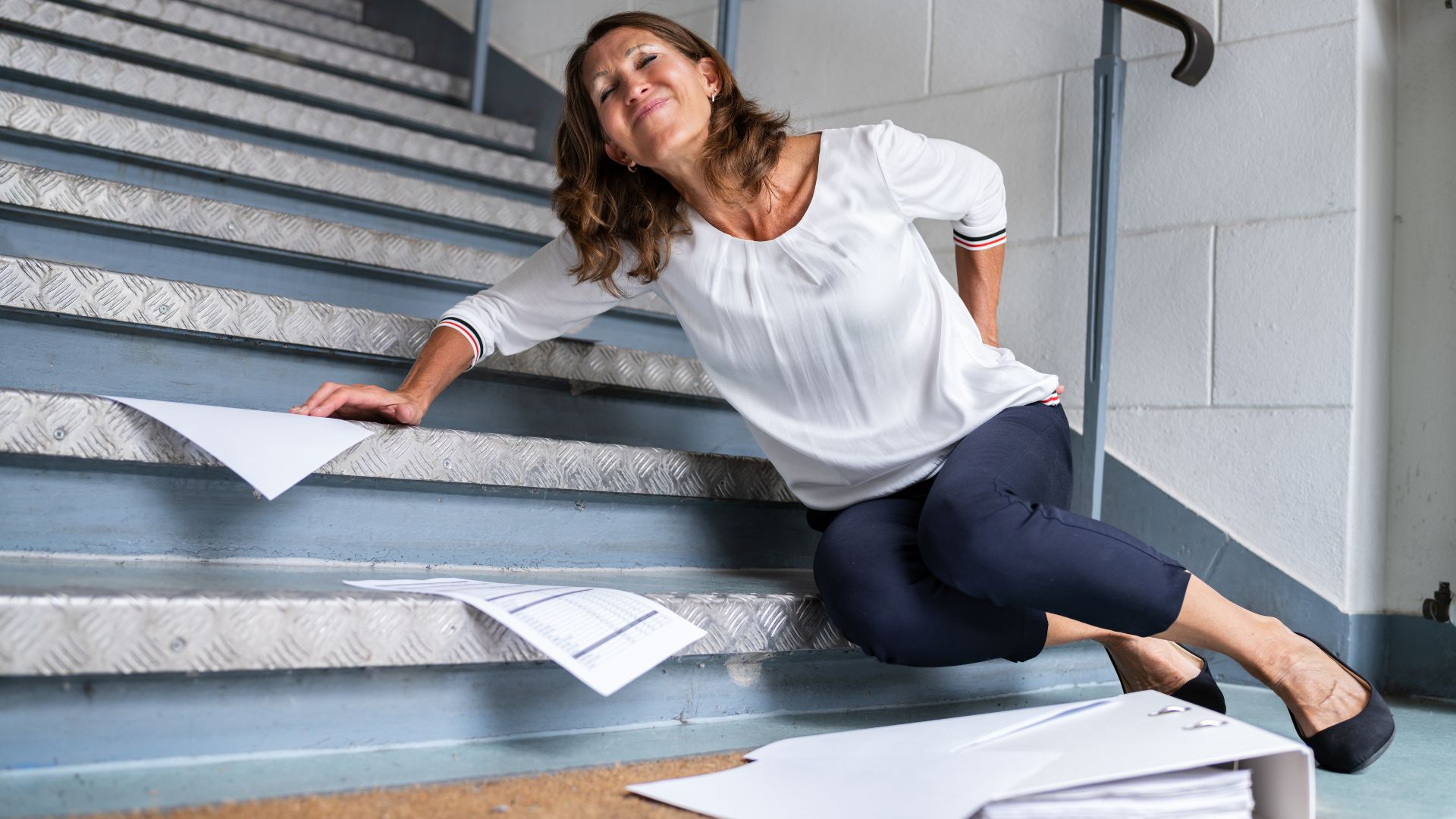
Slip and fall accidents occur every day across Florida. While these incidents can happen virtually anywhere, some places pose a higher risk due to frequent foot traffic, poorly maintained surfaces, or hazardous conditions. Identifying these areas is the first step toward holding property owners accountable under Florida’s premises liability laws.
In this blog post, we’ll examine some of the most dangerous locations for slip and fall accidents, discuss why they present risks, and explain how property owners may be liable.
Top 7 Most Dangerous Places for Slip and Fall Accidents
Slip and fall accidents tend to occur in specific environments where hazards are common and often ignored. Here are seven of the most dangerous places for these incidents and why property owners may be held responsible.
1. Grocery Stores and Supermarkets
These locations are common sites of spills from leaking coolers, produce misting systems, or dropped food. Even when floors are cleaned, staff often forget to put up warning signs. Poor lighting and cluttered aisles also contribute to these hazards. Stores must have policies in place for inspecting and maintaining safe walkways throughout business hours.
2. Restaurants and Cafes
Dining establishments face daily risks from spilled drinks, greasy kitchen floors, and tight spaces. During busy shifts, rushed employees are more likely to overlook hazards. Uneven floor tiles, loose mats, and crowded seating areas can also increase the likelihood of falls. Restaurant owners are responsible for ensuring all high-traffic areas are safe for patrons and staff.
3. Retail Stores and Shopping Malls
Wet floors from rain, recently mopped surfaces, and loose merchandise create dangers in retail spaces. Large displays and decorative elements may obstruct walkways or cause tripping hazards. In Florida, property owners are expected to either remedy known dangers or clearly warn customers until the issue is fixed.
4. Parking Lots and Sidewalks
Uneven pavement, potholes, oil slicks, and pooled water are common in outdoor areas. Poor lighting or a lack of handrails can make matters worse. These conditions are especially risky for seniors or individuals with mobility issues. Businesses and landlords must maintain parking lots and entryways to prevent foreseeable injuries.
5. Apartment Complexes and Rental Properties
Common areas like stairwells, hallways, and laundry rooms must be kept clean, dry, and well-lit. Broken handrails, cracked concrete, or worn-out carpet can easily lead to falls. Under Florida law, landlords have a duty to repair or warn tenants about known dangers in shared spaces.
6. Hotels and Resorts
Guest areas like lobbies, pool decks, and spas are often polished or damp, making them especially slippery. Poor signage, low lighting, and decorative floor transitions (such as carpet-to-marble) can create additional risks. To protect guests from harm, these properties must conduct regular safety inspections and address problems promptly.
7. Hospitals and Nursing Homes
Healthcare settings are particularly dangerous for slip and fall injuries due to slippery floors, medical equipment in walkways, and patients with limited mobility. Florida law recognizes the heightened duty of care owed by these facilities to vulnerable individuals. Failure to implement fall-prevention measures may constitute negligence.
Knowing where slip and fall incidents often happen helps you recognize when property owners may be at fault. If you were injured in one of these places, Maranatha Law can help you understand your rights and pursue compensation.
Why These Places Are High-Risk Under Florida Law
Under Florida premises liability law, property owners owe a legal duty to maintain reasonably safe conditions. Liability for slip and fall accidents often hinges on whether the owner had actual or constructive knowledge of the hazard and failed to fix it or warn about it.
Here’s what that means:
- Actual knowledge. The owner was directly aware of the danger (e.g., a manager saw a spill but did nothing).
- Constructive knowledge. The hazard existed long enough that the owner should have known about it (e.g., a puddle that remained for hours).
In both cases, victims must show that the hazard was foreseeable and preventable.
What to Do After a Slip and Fall in a High-Risk Location
If you’re injured in one of these dangerous environments, your next steps can help preserve your claim. Here’s what to focus on:
- Reporting the incident. Notify the property manager or staff and request a copy of the report.
- Documenting the scene. Take photos or videos of the hazard and surrounding area.
- Gathering witness information. Ask for contact info from anyone who saw the fall.
- Seeking medical attention. Prompt treatment helps document your injuries.
- Preserving footwear and clothing. These items may support your claim.
- Speaking with a slip and fall lawyer. Legal guidance can help you determine if negligence played a role in the incident.
Taking these steps quickly after an accident can make a significant difference in protecting your rights and strengthening your claim.
How to Prove Negligence in a Slip and Fall Accident
If you were injured in a slip and fall accident, you’ll need evidence to support your claim. This includes:
- Photographs of the hazardous condition,
- Incident reports or store records,
- Witness statements from others who saw the fall,
- Surveillance footage (if available),
- Medical records documenting your injuries, and
- Maintenance logs or cleaning schedules showing a lack of upkeep.
The more documentation you gather, the stronger your claim will be.
Time Limits to File a Claim
Under Florida law, you typically have two years from the date of the fall to file a personal injury lawsuit. If you miss this deadline, your right to seek compensation may be lost. There are some exceptions, especially in cases involving government-owned property, but acting quickly gives your case the best chance of success.
How Maranatha Law Can Help
Slip and fall accidents can lead to serious injuries, including fractures, head trauma, or long-term mobility issues. When unsafe conditions cause harm, the law provides a path to compensation, but only if the right evidence is gathered and the correct legal arguments are made.
At Maranatha Law, we focus on helping injury victims throughout Florida pursue justice after preventable falls. Lead attorney Tim Shanahan has years of experience supporting injured Florida residents and understands the challenges involved in proving negligence and building strong claims. If you were injured on someone else’s property, we’re ready to assess your case and advocate for the full compensation you deserve. Contact us today for a free case review.



